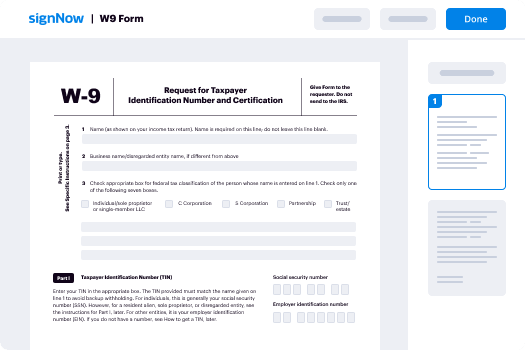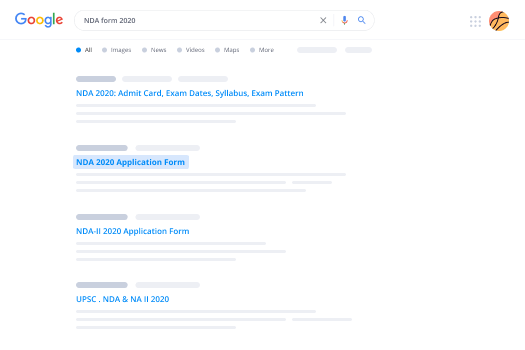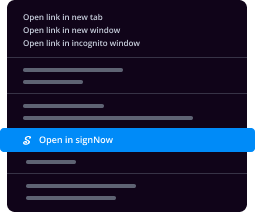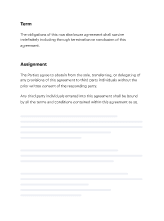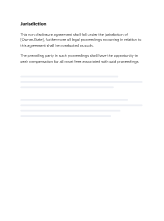- 1 -
MODEL SPOUSAL MAINTENANCE LANGUAGE
Spousal Maintenance. We do not believe that there is a dispute between the parties as to
whether ____________ is entitled to an award of permanent spousal maintenance as she
meets the criteria of Minn. Stat. 518.552, subd. 1(a) and (b): [(s)he] lacks sufficient
property to provide for his/her reasonable needs, and [(s)he] is unable to provide for his/her
own self support considering the standard of living established during the parties' marriage.
Rather, the parties have disparate opinions as to the amount of spousal maintenance which
__________ is permanently entitled to.
The Court is mandated to consider all relevant information, including the factors set forth in
Minn. Sta. 518.552, subd. 2:
a) The financial resources of the party seeking maintenance, including marital property
apportioned to the party, and the party's ability to meet needs independently. The
parties' marital estate is not large except for Respondent's pension and profit-sharing
plan of approximately $_________. Moreover, this retirement benefit requires that
all investment income be retained by the plan until final distribution. Therefore,
____________ will gain no income from this asset presently. Moreover,
____________ should not be required to invade this asset to provide for her current
needs.
b) The time necessary to acquire sufficient education or training to enable the party
seeking maintenance to find appropriate employment, and the probability, given the
parties' age and skills, of completing the education or training and becoming fully or
partially self-supporting. ____________ is a 50 year old female and high school
graduate. During the parties' marriage, she had sporadically attended the University
of Minnesota and completed an additional one and one-half years of general studies.
____________ has investigated attending the College of St. Catherine to complete a
course of study in the literary field at sometime in the future. During the marriage,
____________ was a traditional homemaker and actively supported ____________
career. She participated in significant volunteer activities. However, she did not
work outside of the home except for extremely limited work at her synagogue. She
has no employment history nor has she received any vocational training of any sort.
It would take ____________ a minimum of three years of full-time college
attendance to obtain an advanced degree. With the responsibility for an 11 year old
child, it is doubtful that ____________ can attend school full-time. Therefore, it is
uncertain whether ____________ can even complete a course of study in order to
gain the ability to be employed in a meaningful career.
c) The standard of living established during the marriage. The parties' enjoyed a
quality standard of living during the marriage commensurate with ____________
level of income and professional attainment as a partner in a major law firm. We
have enclosed as Exhibit ___ Petitioner's Affidavit dated ____________ which
carefully delineates an affluent standard of living including a home valued at over
$400,000.00, extensive private education for the parties' children, extensive foreign
- 2 -
travel for all members of the family, and the ability to maintain a consistently high
standard of living while accumulating retirement benefits of $1,000,000.00.
d) The duration of the marriage and, in the case of a homemaker, the length of absence
from employment and the extent to which any education, skills, or experience have
become outmoded and earning capacity has become permanently diminished.
____________ underwent a vocational and medical assessment by Dr.
____________ of Metropolitan Rehabilitation Services, Inc. ____________
concluded that ____________ has special parenting challenges as a single parent of
an adopted Asian child. Moreover, ____________ has experienced a number of
significant medical problems over the years and is currently being treated for
depression, inflammation, and infection. ____________ found that she has
sufficient medical problems which would complicate full-time employment.
Moreover, ____________ recommended that ____________ remain in the home
and active as a homemaker and mother to the extent that it is financially feasible for
at least another seven years, or until Tara graduates from high school.
____________ concluded that as a 57+ year old woman with an advanced education
but no significant work experience, employment opportunities would be very
limited. ____________ did conclude that an educational program was indicated for
____________ however.
e) The loss of earnings, seniority, retirement benefits, and other employment
opportunities forgone by the spouse seeking maintenance. During the parties' 29-
year marriage, ____________ was a traditional homemaker fulfilling the primary
role of wife, mother, homemaker, and supporter of ____________ career. There is
no doubt that ____________ cannot establish meaningful or a well-paying career at
this point in her life, and thus, has experienced a permanent diminution in earnings,
seniority, retirement benefits, and other employment opportunities. ____________,
on the other hand, has another 15 years (approximately) of further career
advancement including the opportunities for salary increases, significant bonuses,
partnership benefits, substantial employment benefits, and the accumulation of
significant pension and profit-sharing benefits. ____________ is on the threshold of
completing his first book which is soon to be published.
f) The age and the physical and emotional condition of the spouse seeking
maintenance. ____________ age of 50 is of paramount importance. ____________
physical and emotional condition may preclude her from full-time employment upon
completing suitable educational courses. The conclusions of ____________, as
presented in his report regarding the impact of ____________ medical problems
upon her employment as well as the desirability for ____________ to remain
primarily a mother and homemaker for another seven years until Tara enters a post-
secondary program of education, are not disputed.
g) The ability of the spouse from which maintenance is sought to meet needs while
meeting those of the spouse seeking maintenance. ____________ has the ability to
- 3 -
fund his own living expenses commensurate with the marital standard of living
while providing for ____________ and ____________ needs as well.
____________ & ____________ provided us with an explanation of ____________
compensation and other benefits (Exhibit X). ____________ has submitted Exhibit
X , the calculations of ____________, CPA, which demonstrate that from an annual
gross income of $271,000.00 and gross monthly income of $22,583.33,
____________ has the ability to contribute $8,327.50 per month in spousal
maintenance for ____________, retaining gross monthly income of $14,255.43 for
his own needs and child support. ____________ calculations further illustrate that
after payment of this level of spousal maintenance, and after deduction for social
security, federal, and Minnesota taxes, ____________ will have a net monthly
income of no less than $10,398.00 per month, exclusive of bonus income, to meet
his own needs. In addition to his base pay, Respondent has a long consistent history
of receiving bonuses as verified by ____________ own statements in his letter dated
June 30, 1992, Exhibit X. On page 1 Respondent writes, "Our cash crisis was
seriously aggravated when, for the first time in my many years at the law firm, no
additional compensation was paid for 1991." 1991 was the only year Respondent
has not received a bonus.
____________, on the other hand, upon receipt of spousal maintenance
payments of $8,327.50 per month, after deduction for federal and Minnesota taxes,
will receive a net monthly income of $6,000.00. These figures illustrate that
____________ is able to comfortably pay the level of maintenance requested by
____________. It should be pointed out that in addition to ____________
compensation, he receives additional annual benefits with a value of $10,279 which
will not be available to ____________.
h) The contribution of each party in the acquisition, preservation, depreciation, or
appreciation in the amount or value of the marital property as well as the
contribution of a spouse as a homemaker or in the furtherance of the other party's
employment or business. ____________ contributions as a homemaker, mother,
and supporter of her husband's career has served as a contribution to the acquisition,
preservation, and appreciation of the parties' marital estate.
3. Bonus Income. In addition to the award of child support and spousal maintenance requested
above, we are requesting that as additional spousal maintenance, Petitioner be awarded
____________% of Respondent's bonus income. With bonuses ranging from $0 to
____________ per year, it would be terrifically inequitable to ignore this income which
Respondent has historically received. On the other hand, if Respondent had another year
like ____________, it would work a hardship upon him to have to fund maintenance based
upon this income. In view of the large fluctuations, and recognizing the significant amount
of income generated by bonuses, the fairest and most straightforward solution is to provide
Petitioner a percentage. Our request for ____________% is more than reasonable. After
payment of taxes, Respondent will in fact end up with perhaps ____________% and
Petitioner with ____________% of the bonus income.
- 4 -
____________ has been able to solely fund all living expenses for both parties as well as
their three children, and at the same time contribute substantial sums to his pension and
profit-sharing plans which has accumulated to $____________. Thus, ____________
clearly has the ability to meet his own living expenses, pay spousal maintenance to
____________, provide for child support, and have sufficient resources left above and
beyond those amounts to pay ____________ attorney's fees. There are no liquid assets for
____________ to use to pay her attorneys fees. Any liquid assets awarded to
____________ go for a down payment on a home for herself and ____________. We,
therefore, request that ____________ be ordered to pay $____________ for ____________
attorney's fees.
Useful suggestions for finishing your ‘Frequently Asked Questions About Alimonywelcome To ’ online
Are you fed up with the inconvenience of handling paperwork? Look no further than airSlate SignNow, the premier eSignature platform for individuals and small to medium-sized businesses. Bid farewell to the lengthy process of printing and scanning documents. With airSlate SignNow, you can effortlessly complete and sign documents online. Take advantage of the extensive features integrated into this user-friendly and affordable platform, transforming your approach to document management. Whether you need to sign forms or gather eSignatures, airSlate SignNow manages everything efficiently, needing just a few clicks.
Adhere to this detailed guide:
- Log into your account or register for a complimentary trial with our service.
- Click +Create to upload a document from your device, cloud storage, or our form repository.
- Open your ‘Frequently Asked Questions About Alimonywelcome To ’ in the editor.
- Click Me (Fill Out Now) to set up the form on your end.
- Add and allocate fillable fields for other participants (if needed).
- Continue with the Send Invite settings to solicit eSignatures from others.
- Download, print your copy, or convert it into a reusable template.
No need to worry if you must work with others on your Frequently Asked Questions About Alimonywelcome To or send it for notarization—our solution provides everything you require to achieve these tasks. Register with airSlate SignNow today and elevate your document management to new levels!


